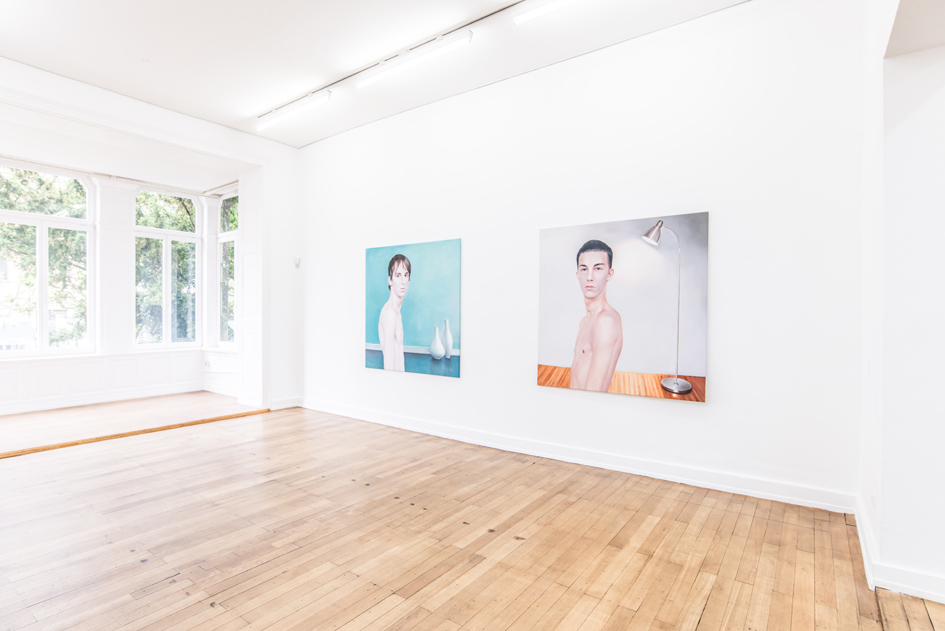
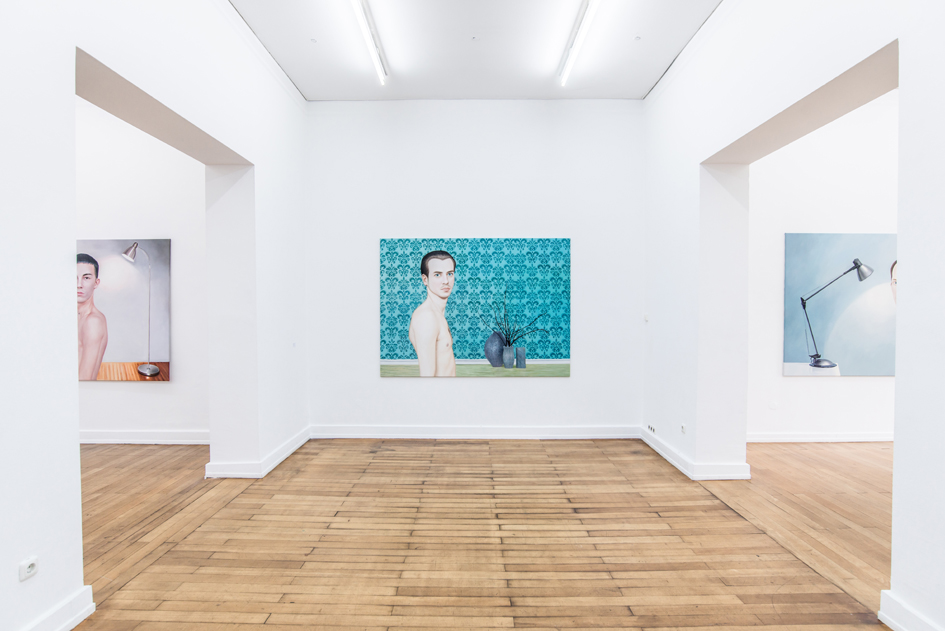
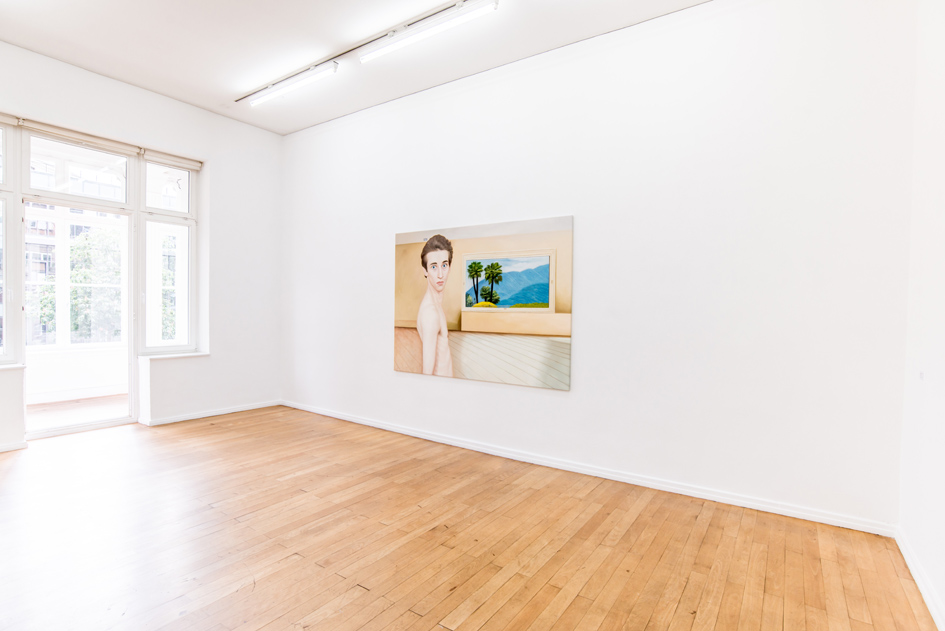
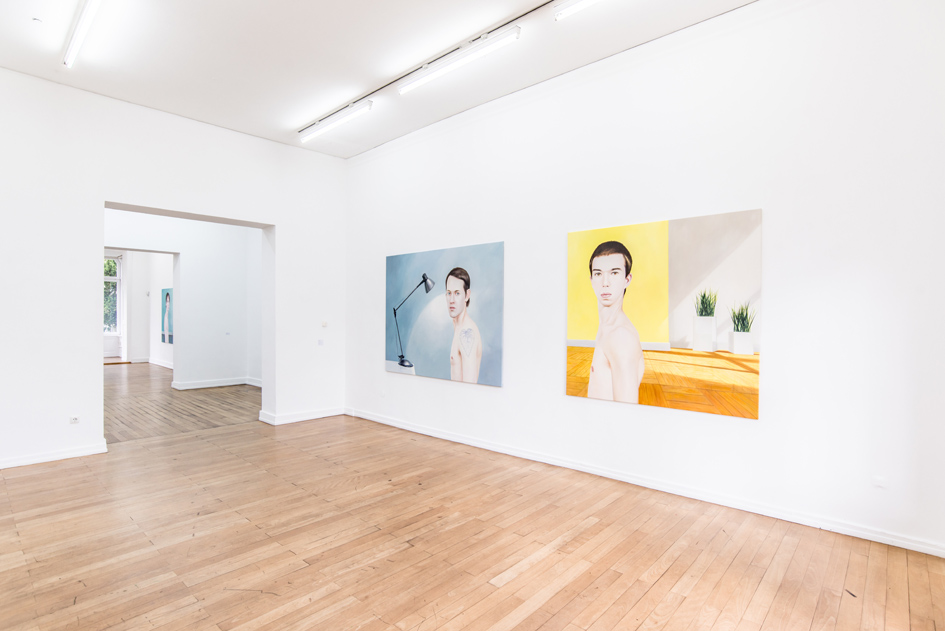
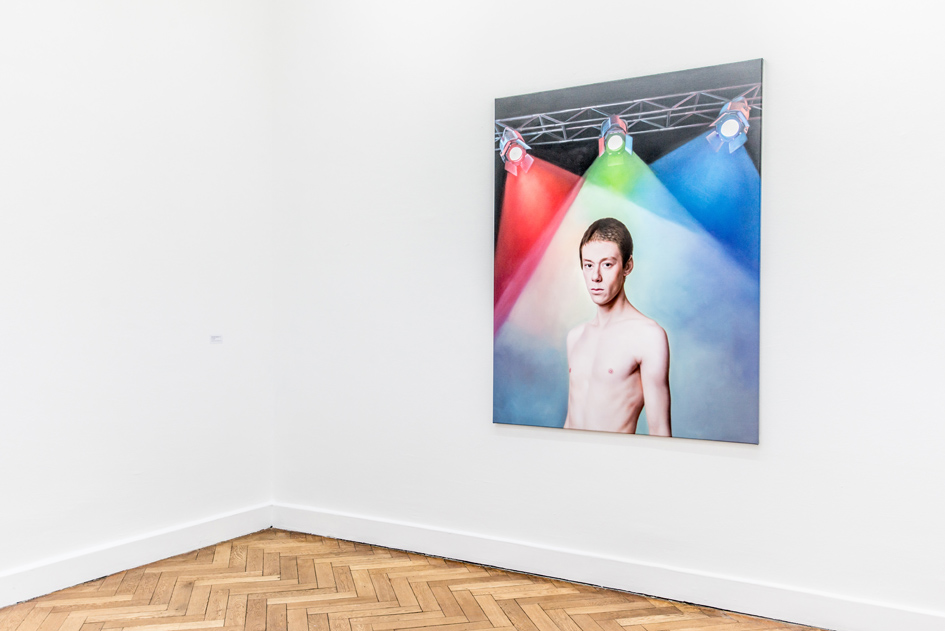
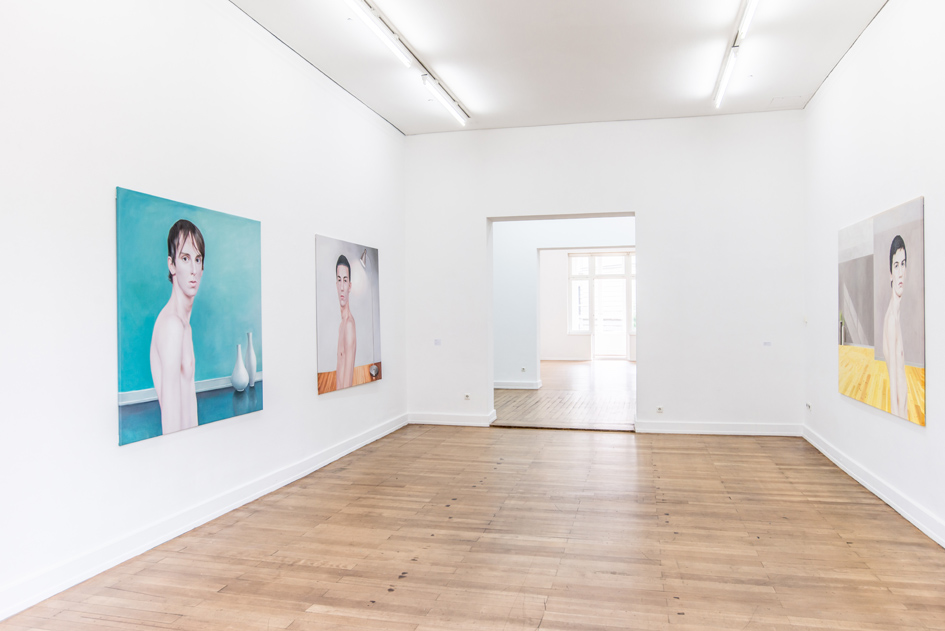
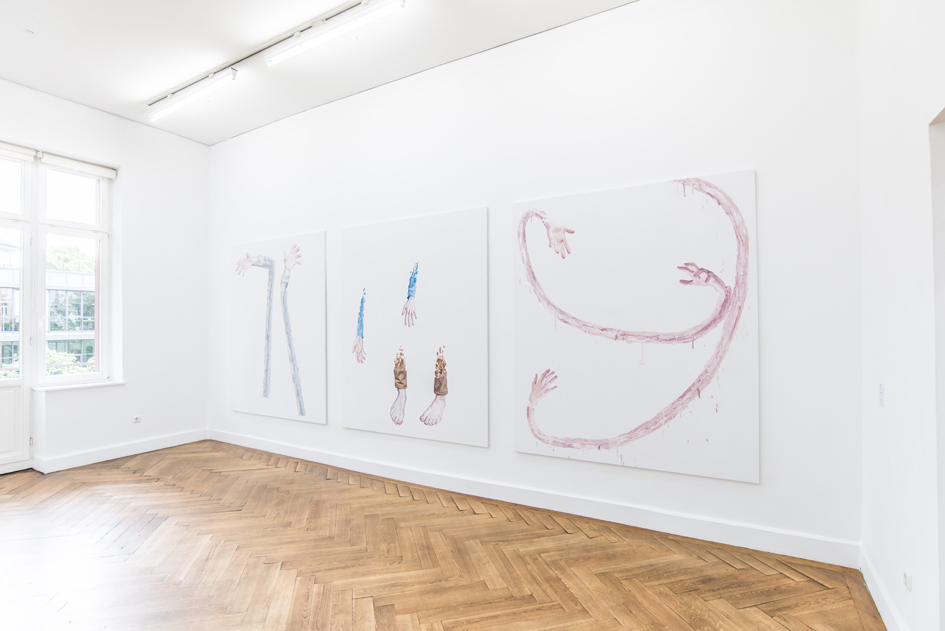
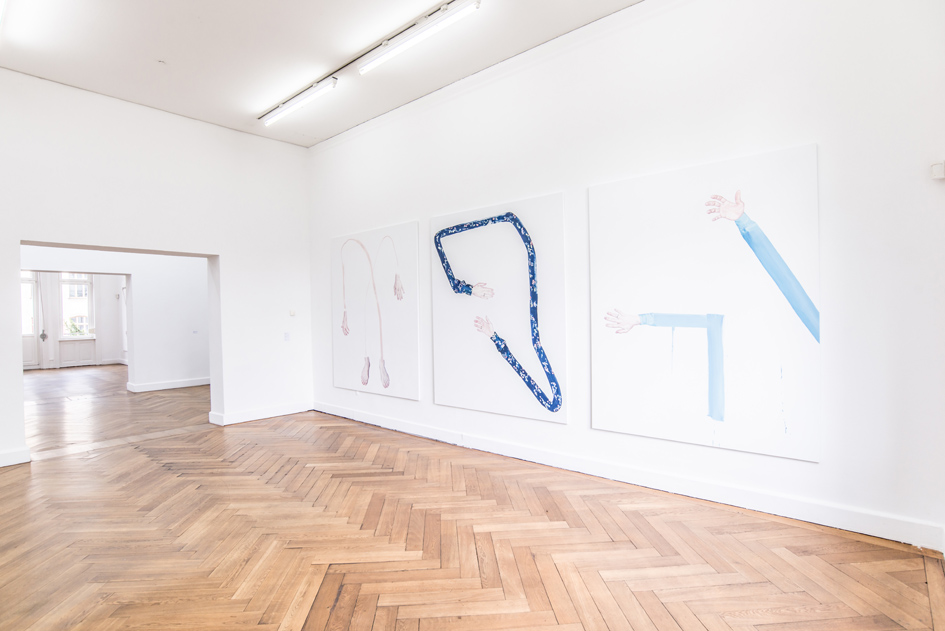
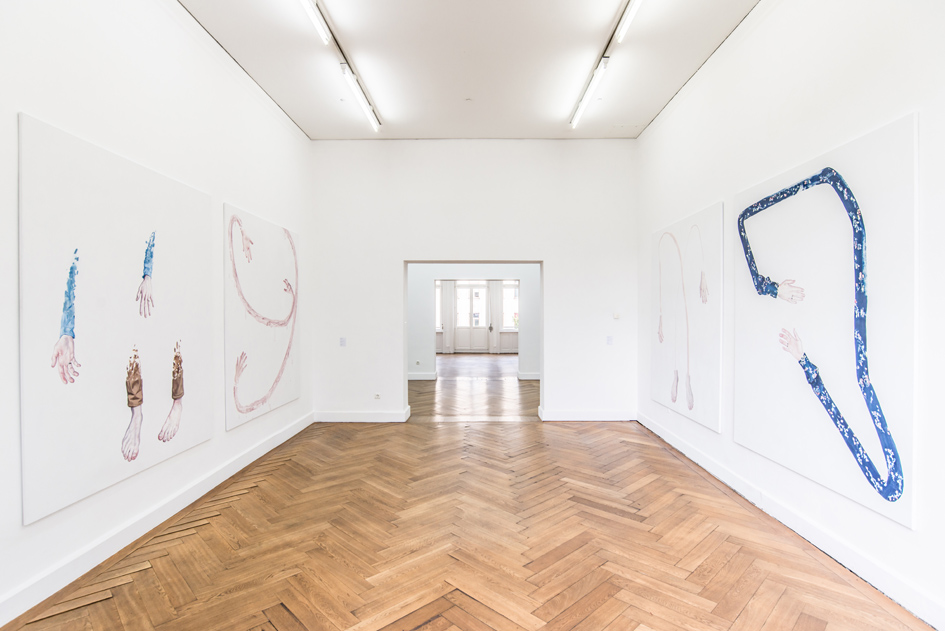
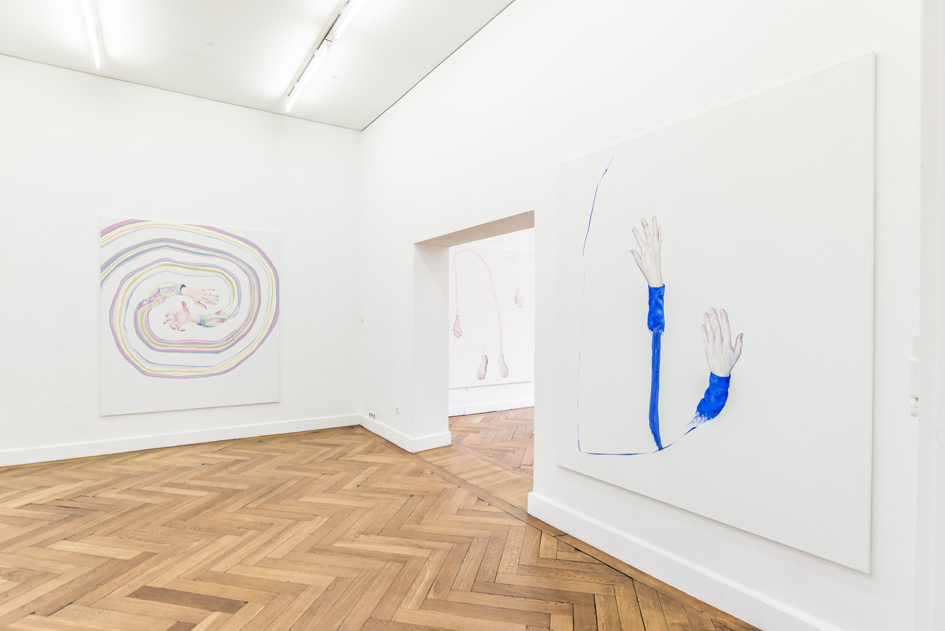
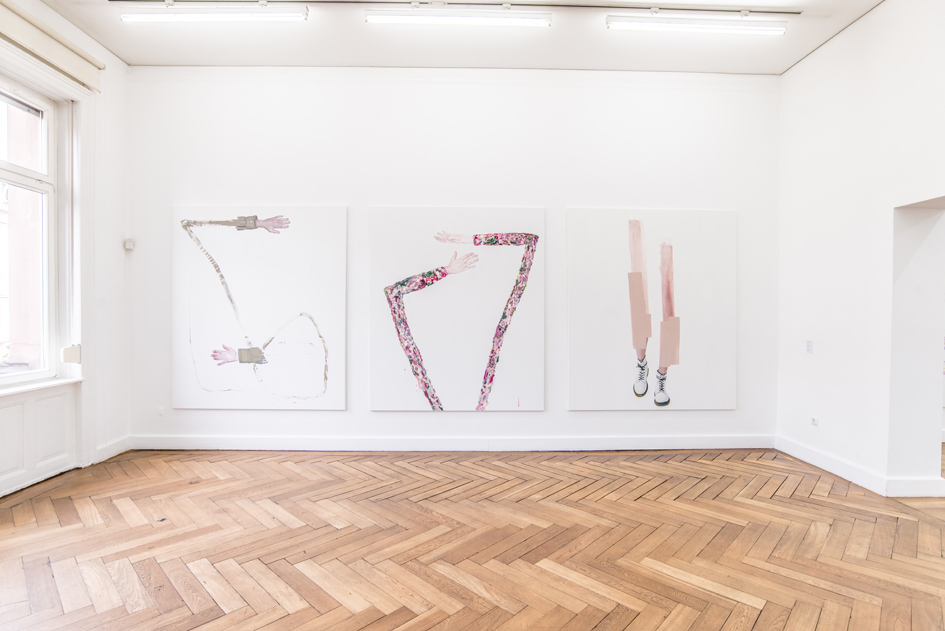
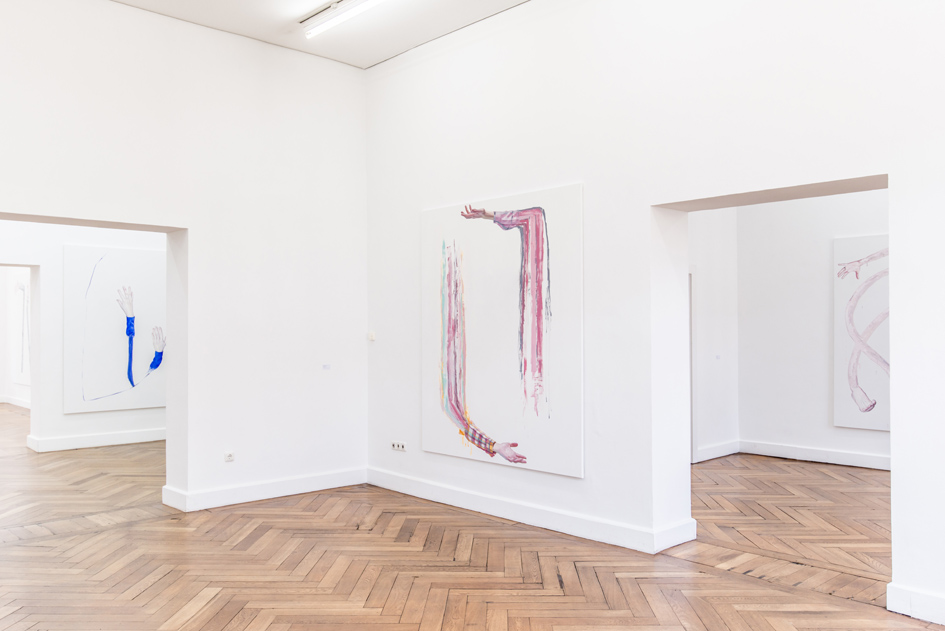
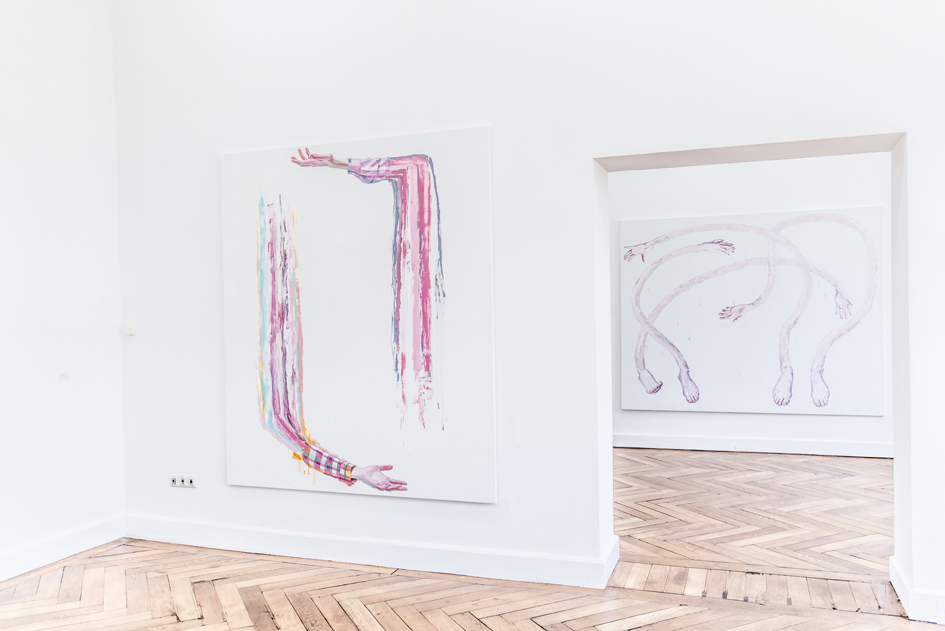
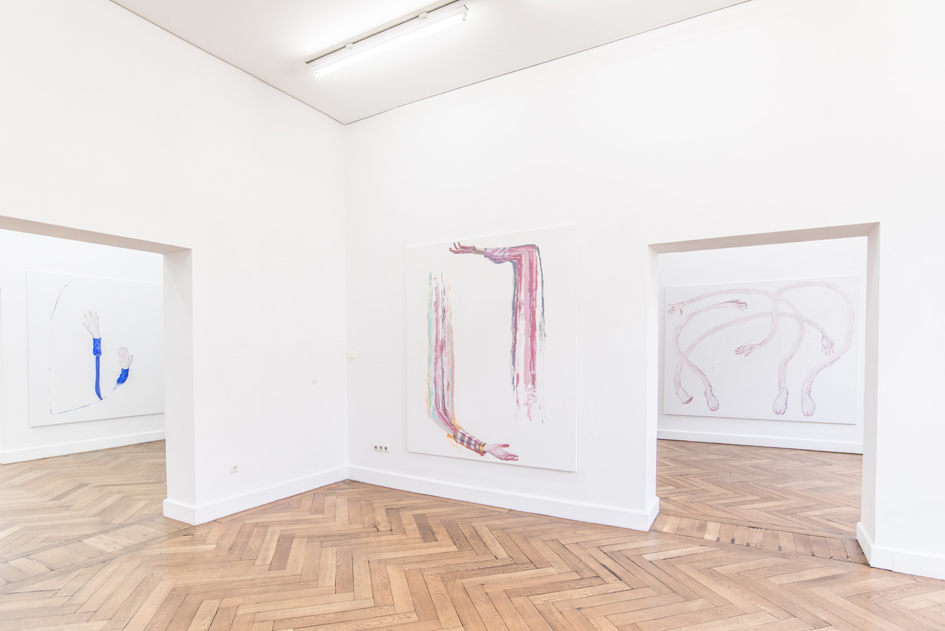
MY GLEAMING SOUL / I AM A FIREBALL
NASSAUISCHER KUNSTVEREIN, WIESBADEN, GERMANY
MAY 20 — JULY 2, 2017
Douglas doesn’t locate her paintings in contemporary discourses that rely on visual tropes
such as digital technology. What is special about Eliza Douglas’ art is that she creates works
that appear fresh without following current trends. To this end, she develops a vocabulary
that on the one hand takes up the history of the medium without dismissing painting as a
historical problem. This balancing act is more difficult to achieve than one might imagine.
The My Gleaming Soul series depicts headless figures, which are actually a complete
reversal of what one expects from the painted body rather than actual figures: the focus
is not on the physicality, strength and dimensions of bodies, but only on the limbs - hands,
and sometimes feet. In these works, Eliza Douglas does not seek formal coherence. The
paintings are no more figurative than they are abstract, no more gestural than they are
processual. In fact, Douglas is careful to ensure that all compositional elements cancel
each other out, so that her works cannot be identified.
The figurative components, for example - the hands and feet - stage a kind of subtraction
on a formal level: they do not allow for a clearly abstract reading and cause the lines to
oscillate between figurative and decorative legibility.
This technique is continued in the series of portraits entitled I am a Fireball. The subjects,
young men with bare upper bodies, look directly at the viewer, but with an expressionless
expression. They are in rooms that lack any personal detail, but at the same time are too
tastefully furnished to appear bureaucratic. What makes this series of portraits so unique
is that Douglas paints people without being interested in the identity of those portrayed.
Instead, in some works, the traditional grammar of portraiture is reversed: a houseplant
occupies the foreground of a room, while the portrait of the young man appears in the
background as a mural - it appears flat even in the imaginary space of the painting. One is
inclined to say that Eliza Douglas, in rendering these various figures, outlines the conditions
of a much more impersonal event, a kind of pre-transitive space in which subjectivity
develops as just one quality among many.
The Stoics were concerned with ataraxia, a kind of serenity and calm that is achieved
by avoiding everything unnecessary. This concept comes closest to the feeling of the
technique she uses. She paints without being preachy or falling into conceptual arrogance.
Instead, she communicates with the viewer through the frugality of a small selection of
formal elements. In fact, her work seems almost solemn as she leaves the historical burden
of painting behind - but full of humor and verve.

|

|

|

|

|

|

|

|

|

|

|

|

|

|
© Christian Lauer